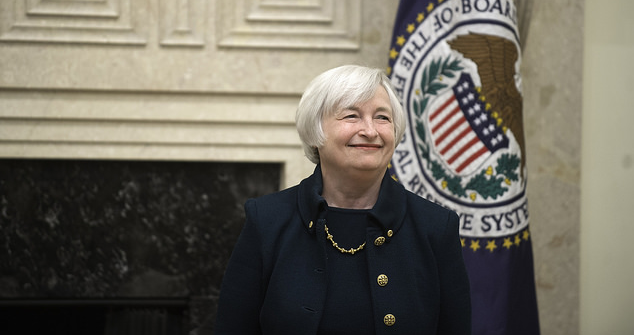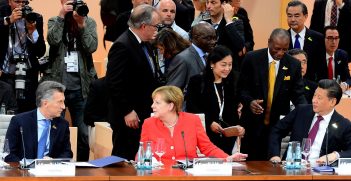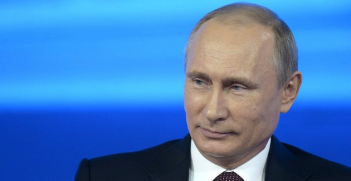Why the Economy – and the Fed – Isn’t Ready for a Rise in Rates

In late February Federal Reserve Chair Janet Yellen delivered her semi-annual testimony before the Senate. In it she gave lawmakers – and the rest of us – a mixed sense of what to expect from the central bank’s monetary policy in the coming months.
She began by noting how much the jobs picture had improved since the last time she appeared before Congress in July 2014, with many indicators nearing their pre-recession levels – signs of a return to normalcy that would presage an increase in interest rates. But she also expressed concern about the lack of wage growth, sluggishness in the housing market and worryingly low inflation.
The big question on everyone’s mind is: do her words indicate the economy is ready for borrowing costs to rise in June because of the strong gains in employment, as some observers expect?
The short answer is no. Here’s why.
Reading tea leaves
The central bank tends to stay mostly mum about the timing of changes in its target interest rate – which can affect the prices of almost every financial asset on the planet, or more than $225 trillion worth – to avoid tying its hands in case economic conditions change. So market participants follow the Fed chair’s musings very carefully to determine from the scant tea leaves she provides what the bank might do.
While some have interpreted Yellen’s words as merely setting the foundation for a return to pre-crisis normalcy in future Fed policy – leaving the timing of interest-rate liftoff dependent on the underlying data – others divined something of an ironclad promise that rates will go up in June.
While both opinions have merit, it’s much more likely that the former takeaway is the right one. That’s certainly the conclusion of traders of Fed funds futures contracts, which allow investors to essentially bet on the likelihood of certain changes in monetary policy.
According to them, the odds of an increase in the Fed’s target rate in June is about 21% and only about 40% in July. The implied probability of a rate hike doesn’t surpass 50% until September, suggesting traders believe it’s still a long way off.
Not quite ready for normal
A thorough analysis of the chairwoman’s speech suggests the same conclusion: that the economy isn’t quite ready to get back to normal.
Indeed, the Federal Open Market Committee – which sets interest rates – finds it “unlikely that economic conditions will warrant an increase in the target range for the federal funds rate for at least the next couple of FOMC meetings,” Yellen said.
“There has been important progress” toward maximum unemployment, she testified, but “too many Americans remain unemployed or underemployed, wage growth is still sluggish and inflation remains well below our longer-run objective.”
Her statements can hardly be viewed as either particularly hawkish – that is, prone to raising interest rates – or a strong signal that the date to start monetary policy normalization is set in stone. Yellen is following the same playbook as her predecessor, Ben Bernanke, who stated that the timing of interest-rate changes is always subject to the nature of the incoming economic data.
Why the economy isn’t ready
So if a rate hike is dependent on the data, what do they say about the economic outlook?
Though there are good reasons to be optimistic – consistent growth, a decrease in unemployment to normal levels and a booming stock market – there are still issues that the Fed must keep an eye on and are keeping it from pulling its interest-rate lever.
First, inflation – the pace at which goods and services increase in price – is still well below the Fed’s target level of 2%, and Yellen said the committee expects it to decline further in the near term. One measure that includes energy and food prices puts it as low as 0.2%.
The most significant external factor curbing inflation, of course, is the plunge in oil prices, which pushes down the cost of pretty much everything else. Lower prices at the gas pump may be great news for economic growth overall, but when inflation is too low it makes debt more difficult to repay, limits the ability of the Fed to stimulate the economy and worst of all can discourage spending if prices begin to actually fall – known as a state of deflation.
A premature rate hike would likely further lower the pace of inflation because it would effectively reduce how much money consumers can borrow and spend, putting downward pressure on prices.
Labor market gloom underlies sunny data
A second contributing factor is the labor market. Underneath the positive headline figures lurk continuing signs of struggle.
Indeed, even though the economy added 295,000 new jobs in February, pushing the unemployment rate down to 5.5% – the lowest level since the financial crisis began – wages are still not rising much. Typically, large gains in employment means workers, particularly skilled ones, have more leverage to bargain for higher pay. That in turn drives up prices and fuels inflation because labor is a significant business cost. This is not happening now, at least not to the extent it did during previous recoveries.
Moreover, the labor force participation rate – the share of adults with a job – remained under 63%, or about the lowest since the late ‘70s and a full 4.5 percentage points below the values we saw in the late ’90s. The withdrawal of so many people from the labor force makes the unemployment rate appear artificially low and creates an overly optimistic picture of jobs growth.
The lackluster housing market is another concern on Yellen’s mind. While multi-family sales are back to pre-crisis levels, single-family starts remain at about one-third of their pre-crisis peak. Additionally, only 36,000 new single-family houses sold in January, a level usually observed during a recession.
Finally, the pace of economic growth since the recession ended in 2009 – often used to illustrate how much things have improved – is still not on par with past recoveries. In the five years following the three previous recessions, the economy expanded at an average annual pace of 4.6%, 3.4% and 2.7%. That contrasts with the middling performance in the current recovery: just 2.2% a year from 2010 to 2014.
When will they be ready?
Regardless of how we interpret Yellen’s speech, a rate hike on June 17 remains an open possibility – but only if we see a bit more improvement in the economic data, enough to signal the recovery’s speed has picked up enough to justify the Fed beginning to tap the brakes.
Financial markets, which have reacted wildly after past statements on the timing of changes in monetary policy – swooning at the mere suggestion that rates might go up someday – were largely muted following Yellen’s most recent testimony. The striking contrast suggests they’re in fact ready to see interest rates rise.
But whether companies, businesses and most importantly the Fed are ready as well, is still hazy. The economy is clearly on the mend, yet there remain many areas of concern, including slowing growth elsewhere in the world and a strong dollar that is hammering exporters.
For now, Yellen is rightly intent on pursuing a wait-and-see approach that probably won’t result in a rise in borrowing costs until much later in the year.
Alex Nikolsko-Rzhevskyy is an Assistant Professor of Economics at Lehigh University. This article was originally published on The Conversation on 10 March 2015. It is republished with permission.





